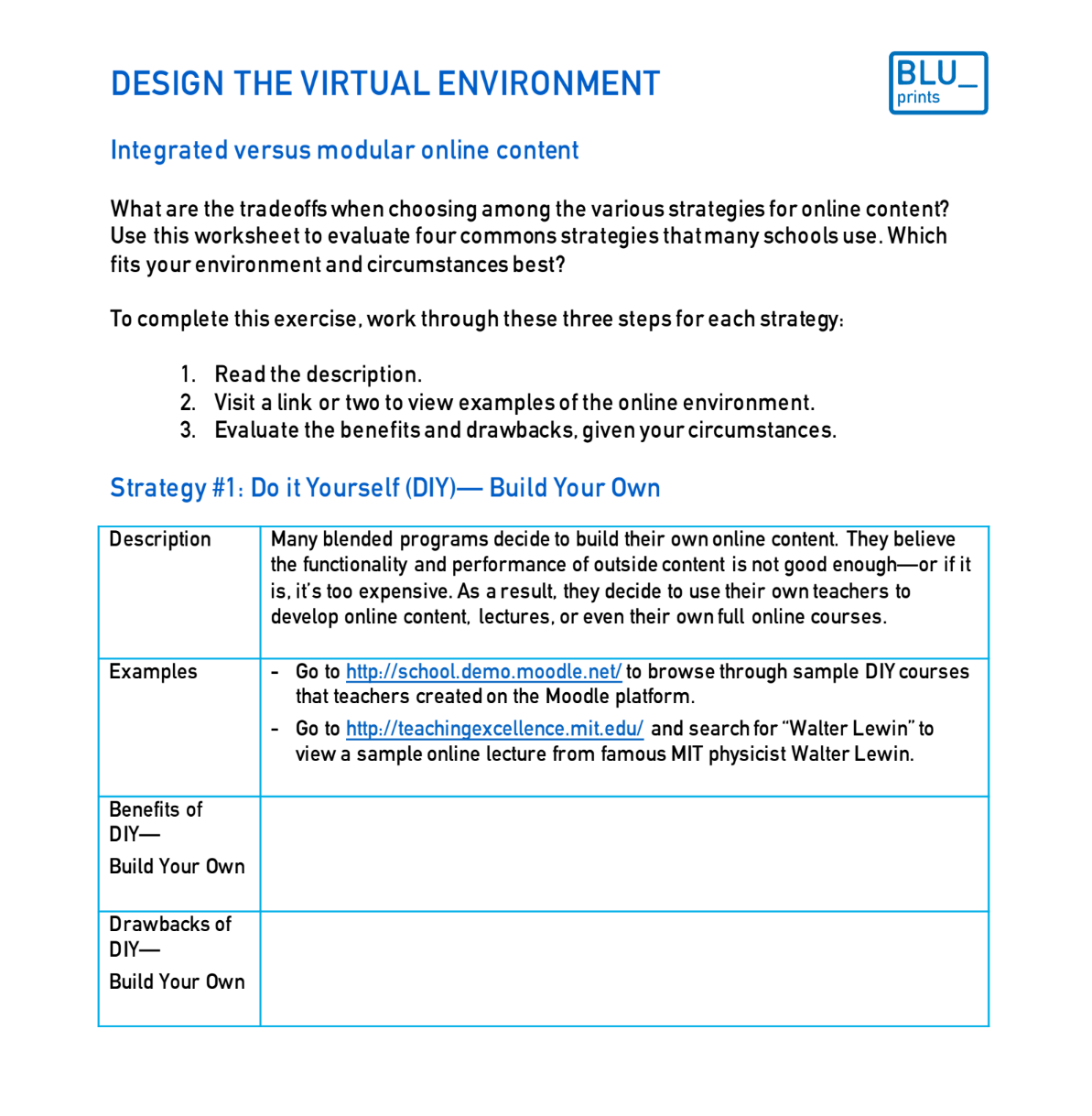Choose the technology
The right tech choices are critical to any successful program.

How to determine your tech strategy:
1
For quality control, build your own content and infrastructure.
In general, the more you control, the more you can control quality. If you aren’t satisfied with outside providers, creating your own online content may be a good option. In fact, some educators enjoy developing the skill set to build an online course, lesson, video, or software program. DIY content, however, can be extremely time-intensive for busy educators.
2
For simplicity and reliability, use a single curriculum provider.
You may be limited in options, but going through a single curriculum provider for a given course or subject can be easier than than trying to mix and match modules from a variety of sources to create a patchwork solution. This can be especially helpful if educators can't find the time to analyze disparate data from different software programs.
3
For flexibility, utilize multiple providers.
By employing multiple online content providers, you can leverage the strengths of each to customize content and delivery for each individual student. Educators can mix and match content within a course to allow for a variety of pathways for each student. Knitting data together from those programs, however, can prove time-consuming.
4
For hyper-customization, consider a facilitated network, or platform with multiple providers.
In a facilitated network you can search and select content from a variety of providers to fit your needs. The two main benefits of this strategy are hypercustomization and affordability.
QT
Quick
Tip:
One of the best kept secrets in edtech is how difficult it can be to get data out of commercial software programs. Be sure to negotiate access to data upfront. For hardware, there’s a lot to consider - search the BLU school directory to find schools using specific devices.
FROM THE FIELD: MATCH NEXT
This public charter school in Boston, MA, only uses online tools for practice, and relies on teachers and tutors to provide both the online and offline instruction. The key to their model is the use of tutors who work with small groups of students each and every day. Andrew Jeong, the school’s Director of Instruction, said that “I sat through demo after demo of EdTech providers, and felt that nothing approached the quality that our tutors can provide”. In this scenario, Match Next opted to forgo any curriculum provider at all.
 Previous: ELEVATE TEACHING
Previous: ELEVATE TEACHING 
